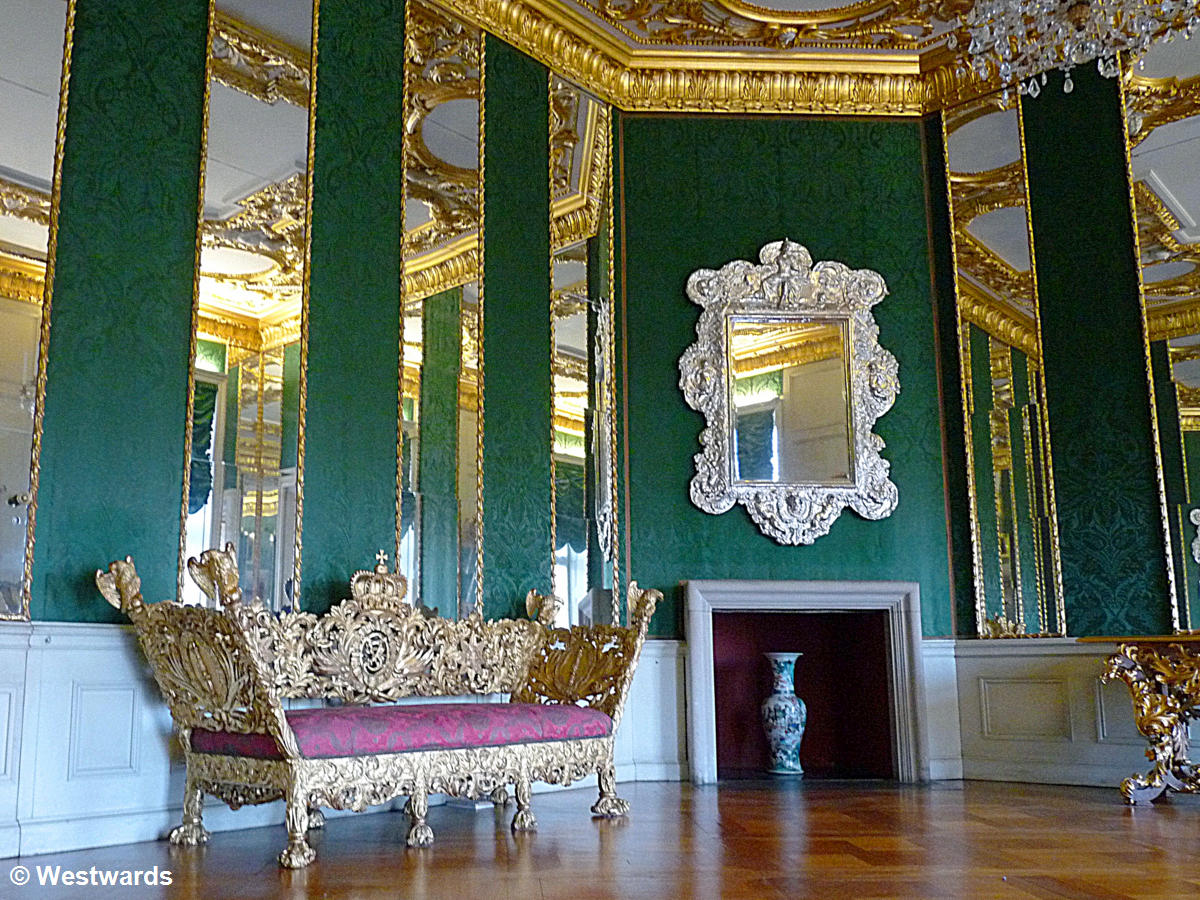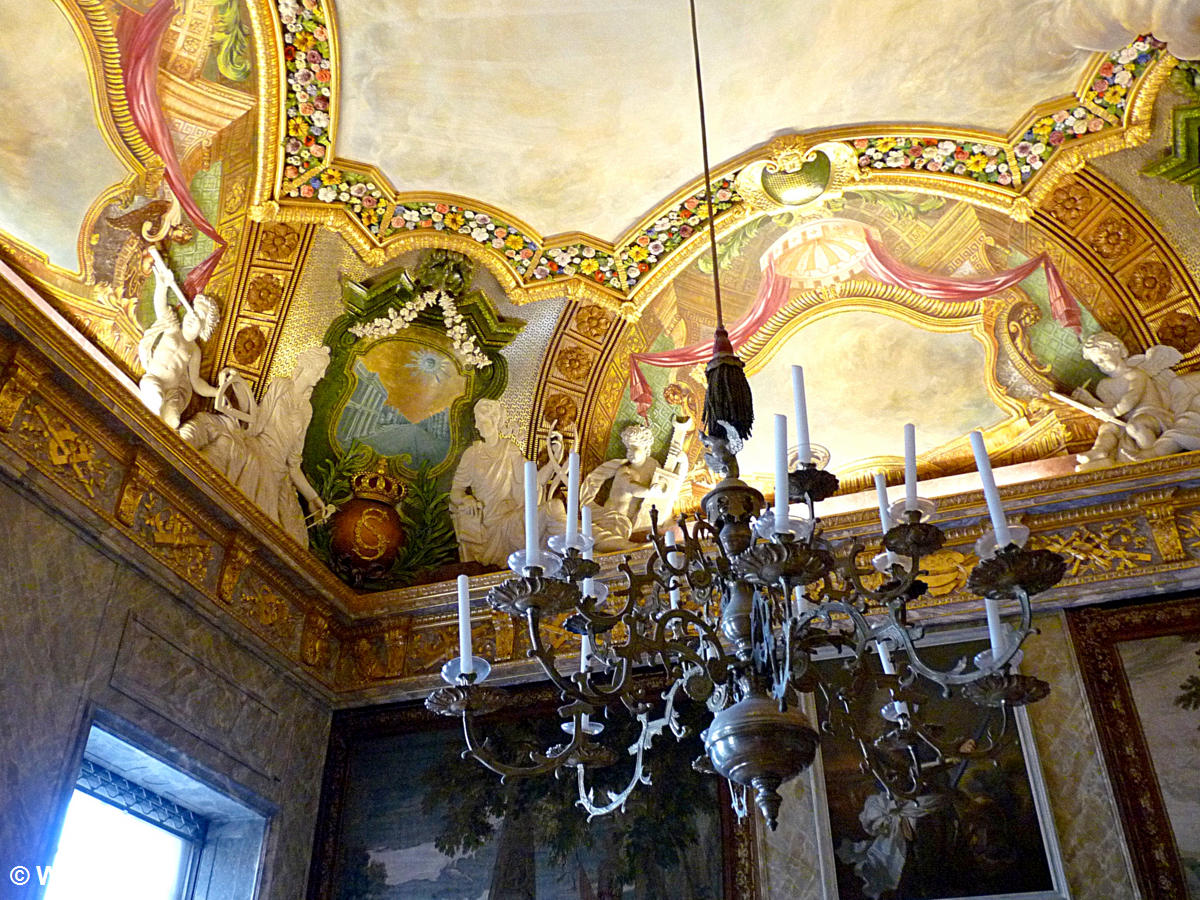
On a rainy Saturday we finally visited two of Charlottenburg’s museums we had had on our sightseeing list for quite some time: The Egyptian Kalabsha Gate in the Scherf-Gerstenberg Collection and the Charlottenburg Palace.
The famous Kalabsha Gate
The Kalabsha Gate came to Berlin in 1977 as a present by the Republic of Egypt, in return for the participation of the German Archaeological Institute (DAI) in the salvation of the monuments in Nubia. With the construction of the new Aswan dam, the Nile’s water level had risen and many of the old monuments upstream were in danger and had to be moved to higher grounds in a huge archaeological rescue mission. The Germans spent three years disassembling the Roman-period Kalabsha Temple into 13 000 pieces and rebuilding it closer to Aswan.

The relief blocks of a monumental gate from a previous temple found a home in the Stüler Building, originally built as barracks for the army officers of the Garde du Corps of the Prussian king. In the 1970s it was housing the Egyptian collection of West Germany. When the New Museum (also built by Stüler!) re-opened in 2009, the Egyptian collections of West and East Germany were brought together there, but the Kalabsha Gate turned out too massive to move. So it remained in Charlottenburg, now sharing the exhibition space with the surrealist art of the Scharf-Gerstenberg Collection. In fact, apart from the format, Emperor Augustus dressed up as Pharao and worshipping a Nubian fertility god doesn’t look so much out of place between Paul Klee, Max Ernst, Goya, Dubuffet and others.
The splendid Charlottenburg Palace
The baroque Charlottenburg Palace just across the street was commissioned at the end of the 17th century by Sophie Charlotte of Hannover. Originally her summer residence near the village of Lietzow, it was called Lietzenburg (Lietzen castle), and only renamed in her honour after her death in 1705. By then Sophie Charlotte had become Queen of Prussia, and the small country residence a full-fledged palace.

„Well then, I will meet you in the next room – just press the green button when you are ready!“ Isolated by their headsets, dozens of visitors tread the rebuilt parquet floors: The Audioguide is included in the hefty entrance fee of 12 Euro. It is bearable, but somewhat patronising. „I will give you some time here to experience the atmosphere of this unique room!“ Alternatively, you could choose a guided tour with a giggling, fidgeting guide, covering only some of the rooms but giving more factual details.

“Don’t miss the best,” one of the guards shoos visitors into the treasure room to look at the Prussians’ crowns and bejewelled snuffboxes. Since the upper floor was almost completely destroyed in World War II, the reconstructed rooms are mostly used to display the Prussian silver and porcelain collections.
And finally, the voice in the headphones asks us to look out over the huge gardens, and tells us where to return the Audioguide. Outside in the cold, a dressed-up Frederick the Great is advertising for a classical concert after your visit to the museums of Charlottenburg.



